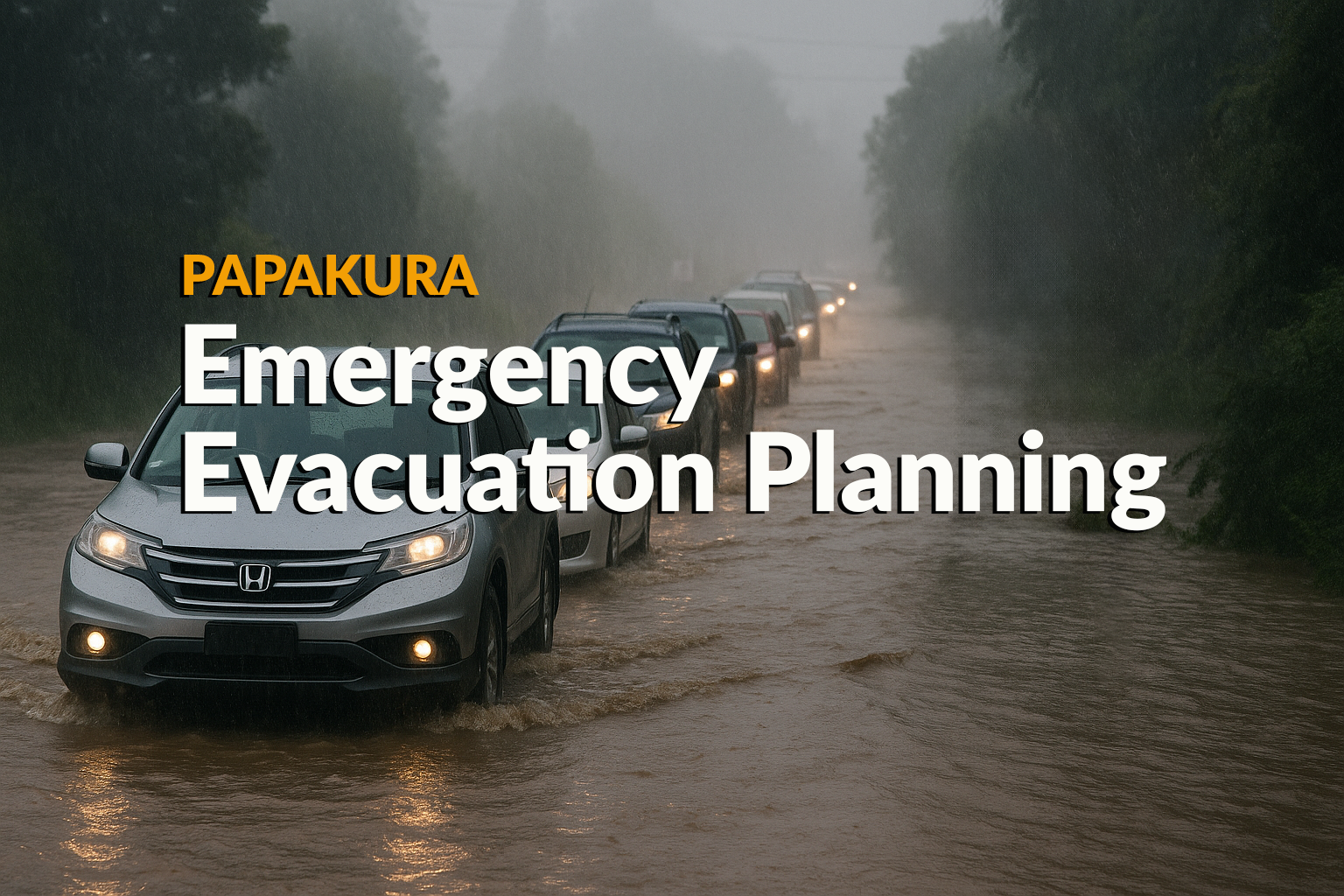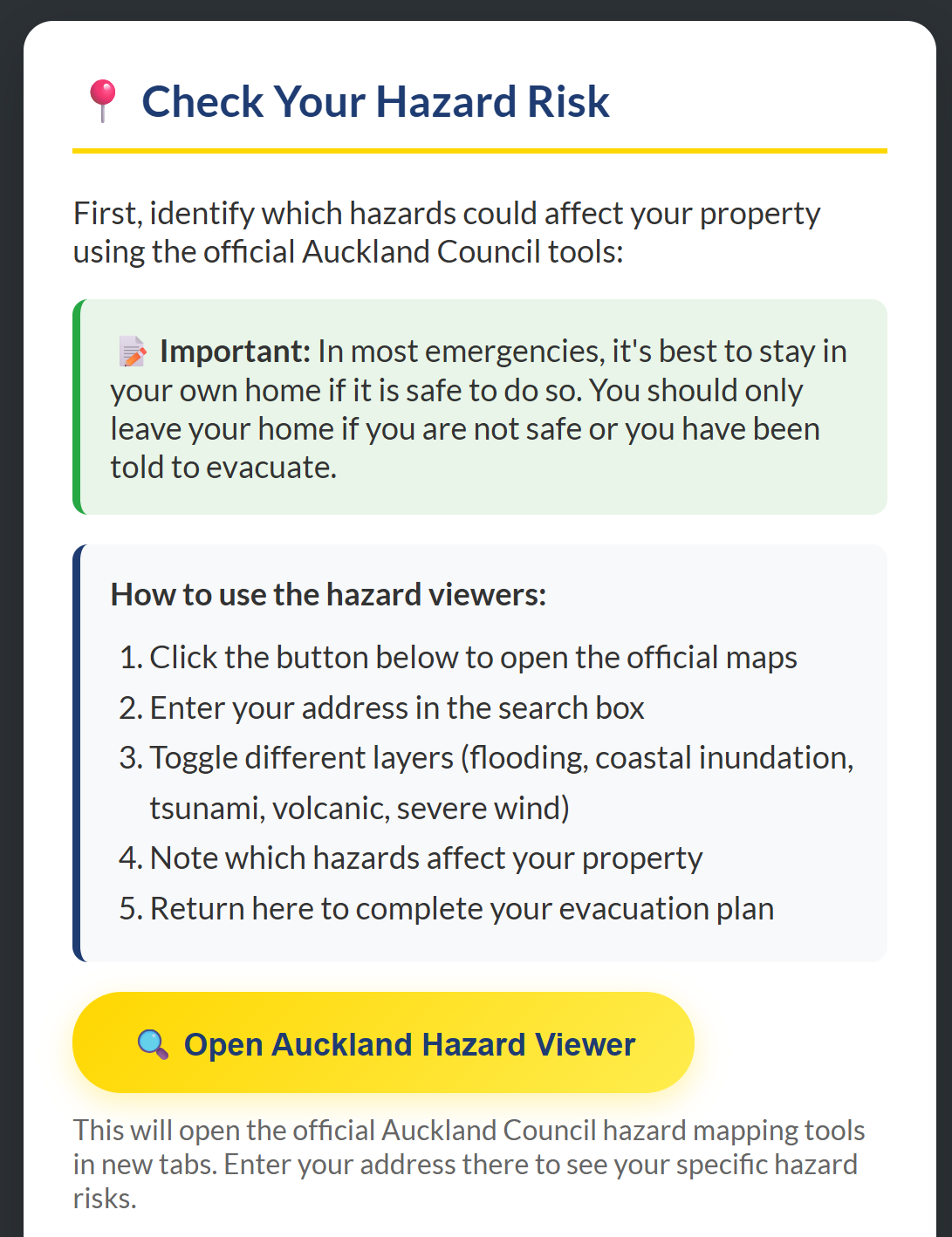When emergency strikes Papakura, your first instinct might be to evacuate immediately. However, Auckland Emergency Management’s official advice is clear: “In most emergencies, it’s best to stay in your own home if it is safe to do so. You should leave your home if you are not safe or you have been told to evacuate.”
This guidance, emphasized throughout the Papakura Emergency Readiness and Response Plan, reflects a crucial shift in emergency thinking, moving away from panic-driven responses toward informed decision-making that could save lives.
Understanding Papakura’s Real Risks
The Papakura Emergency Readiness and Response Plan recognizes that while coastal communities might focus heavily on tsunami preparation, Papakura faces a different risk profile. Flooding is the most prevalent hazard in both Auckland and Papakura specifically. The flat, fertile plains that make the area excellent for agriculture and development also make it vulnerable to water-related emergencies during extreme weather events.
The Auckland Hazard Viewer identifies five main categories of risk: flooding, coastal inundation, severe wind, tsunami, and volcanic hazards. For most Papakura residents, flooding tops the list. High consequence hazards like earthquakes and volcanic eruptions have lower probability than severe weather and flooding, but the impacts can be very serious. Therefore, we need to acknowledge these and prepare accordingly.
The Mobile Alert Revolution
Gone are the days of tsunami sirens wailing across Auckland suburbs. The majority of Auckland’s tsunami warning sirens were deactivated and decommissioned in 2023, replaced by the more targeted and informative Emergency Mobile Alert system. This technology allows Auckland Emergency Management to send specific, actionable information directly to phones in affected areas.
The key question becomes: “If a long shake or mobile alert woke you right now, and it’s not safe to stay at home, would you know which way to go?” This emphasizes calm, informed action over panic-driven evacuation.
Hazard-Specific Planning
Emergency planning isn’t one-size-fits-all. Your evacuation strategy for flooding differs significantly from your approach to severe wind or volcanic ash fall. The Papakura plan outlines different approaches for various scenarios:
- Flooding: Plan routes to higher ground, know which roads typically become impassable
- Coastal Inundation: Understand storm surge risks, particularly during king tides
- Severe Wind: Focus on sheltering in place, securing outdoor items
- Volcanic Hazards: Prepare for ash fall, ensure indoor air filtration
- Tsunami: Know evacuation zones and practice routes to high ground
Community Infrastructure and Resources
The Papakura Emergency Readiness and Response Plan details an extensive network of Community Emergency Hubs and Civil Defence Centres throughout the area. Residents should familiarize themselves with their nearest hub:
- Papakura Marae
- Takanini Gurdwara
- Drury Hall
- Red Hill Community Centre & Blue Light Papakura
- Ngāti Tamaoho Trust
- Kootuitui Trust
These hubs serve as coordination points for community mutual aid, not just evacuation centers.
Do you know your zone?
Every Papakurian needs to know what zone they live in when it comes to disasters. If a long shake or mobile alert woke you right now, (and it was not safe to stay at home) would you know where to go?
The “Stay or Go” Decision Framework
The updated emergency guidance emphasizes decision-making over automatic evacuation. This framework asks residents to assess:
- Is my home safe right now? Consider structural integrity, flood risk, proximity to hazards
- Have I been officially told to evacuate? Mobile alerts, radio announcements, door-to-door notifications
- What are the risks of leaving versus staying? Sometimes evacuation routes are more dangerous than sheltering in place
Technology and Traditional Preparation
Modern emergency management balances digital tools with analog backups. The Auckland Hazard Viewer provides real-time, address-specific risk assessment that wasn’t available to previous generations. However, the Papakura plan emphasizes that paper maps, battery-powered radios, and physical supply caches remain essential when digital infrastructure fails.
This dual approach proved its value during recent Auckland flooding events, where communities with both digital awareness and traditional preparations fared better than those relying solely on either approach.
Community Resilience Through Individual Preparation
The Papakura Emergency Readiness and Response Plan recognizes that community resilience depends on residents who understand their specific risks and have practiced, appropriate responses. The most prepared households know their flood evacuation routes but also understand when to shelter in place during severe wind. They’ve practiced evacuation timing but also stocked supplies for extended home sheltering.
Implementation That Works
Effective emergency planning integrates seamlessly into daily life rather than existing as a separate, overwhelming project. This means choosing schools and workplaces with emergency planning in mind, building relationships with neighbors who could provide mutual assistance, and making preparation decisions that enhance rather than complicate regular routines.
The goal isn’t perfection but rather practical preparedness that acknowledges Papakura’s specific risk profile while respecting official guidance about when to stay and when to go.
Emergency preparedness in Papakura succeeds when it reflects local realities outlined in the community’s dedicated emergency plan: flooding as the primary risk, mobile alerts as the main warning system, and “shelter first, evacuate when necessary” as the guiding principle. By grounding preparation in these realities, residents build resilience that serves them across the full spectrum of potential emergencies.





0 Comments